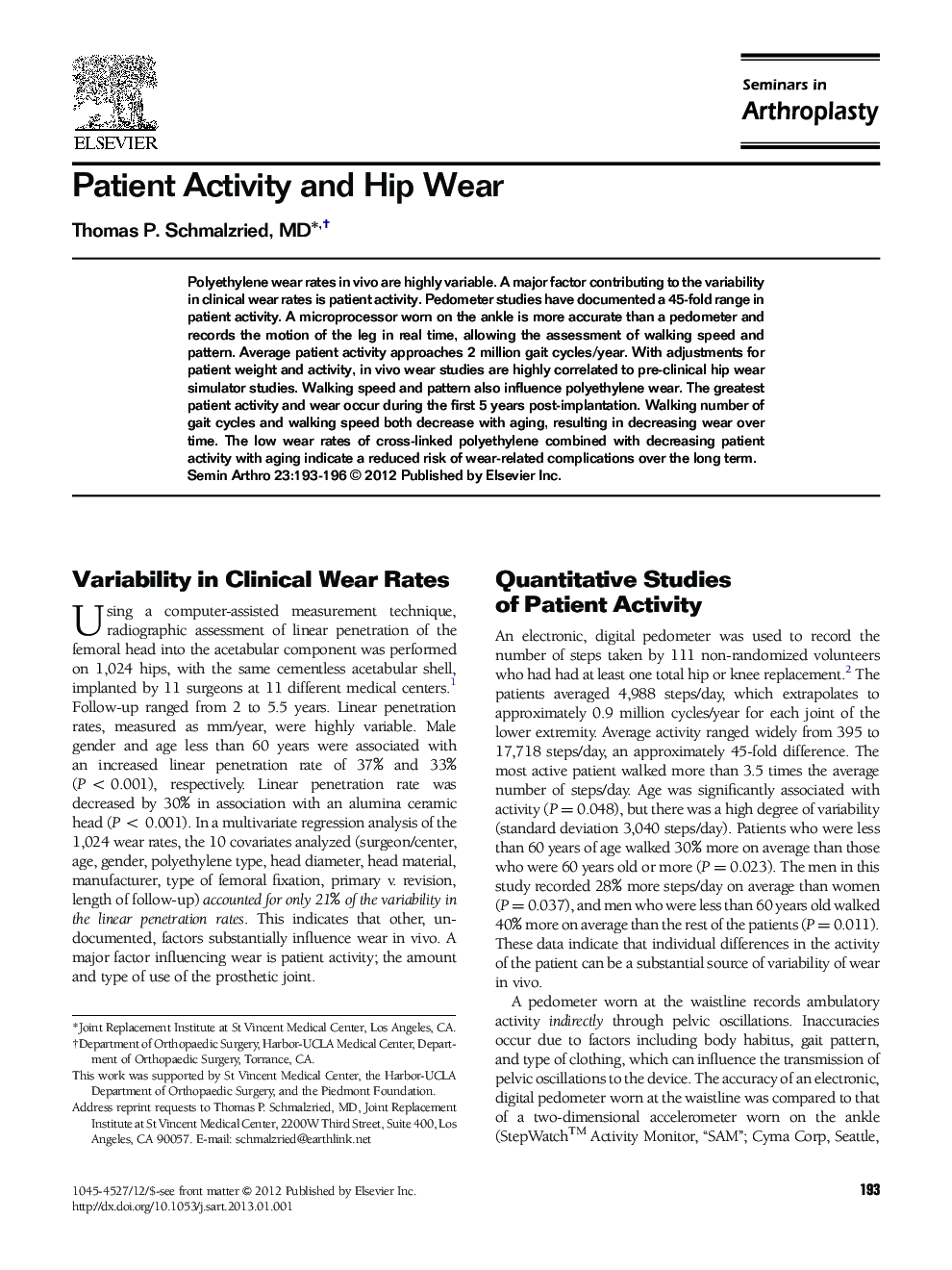| Article ID | Journal | Published Year | Pages | File Type |
|---|---|---|---|---|
| 4093758 | Seminars in Arthroplasty | 2012 | 4 Pages |
Polyethylene wear rates in vivo are highly variable. A major factor contributing to the variability in clinical wear rates is patient activity. Pedometer studies have documented a 45-fold range in patient activity. A microprocessor worn on the ankle is more accurate than a pedometer and records the motion of the leg in real time, allowing the assessment of walking speed and pattern. Average patient activity approaches 2 million gait cycles/year. With adjustments for patient weight and activity, in vivo wear studies are highly correlated to pre-clinical hip wear simulator studies. Walking speed and pattern also influence polyethylene wear. The greatest patient activity and wear occur during the first 5 years post-implantation. Walking number of gait cycles and walking speed both decrease with aging, resulting in decreasing wear over time. The low wear rates of cross-linked polyethylene combined with decreasing patient activity with aging indicate a reduced risk of wear-related complications over the long term.
